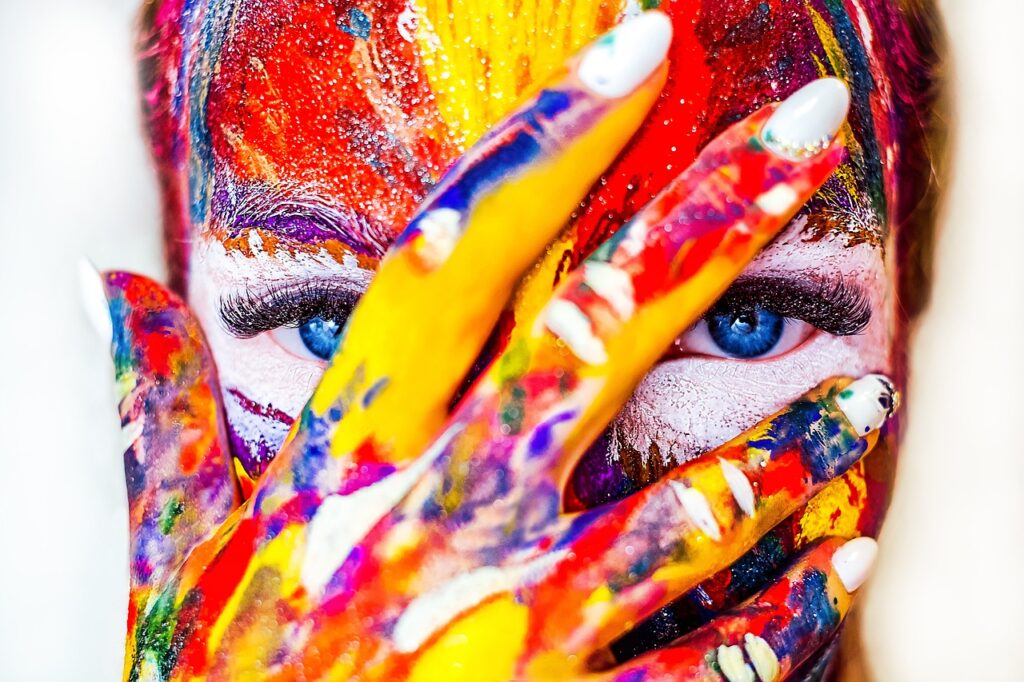Art has been a medium of expression for centuries, helping individuals communicate, process, and release emotions in ways that words often cannot. Art therapy, a form of expressive therapy, taps into this potential by using creative processes to improve mental and physical well-being. In recent years, studies and personal experiences have highlighted its effectiveness in alleviating mental health issues and promoting holistic healing. This article delves into the power of art therapy, exploring how creativity can indeed heal the mind and body.
What Is Art Therapy?
Art therapy is a therapeutic technique that encourages self-expression through various art forms, such as drawing, painting, sculpture, or collage. It is facilitated by a trained art therapist who provides guidance and support, but the core of the therapy lies in the creative process itself. Art therapy aims to help people explore emotions, resolve inner conflicts, develop self-awareness, manage behavior, and reduce anxiety and stress.
The Benefits of Art Therapy for Mental Health
Art therapy has proven highly beneficial for mental health, especially in managing issues such as depression, anxiety, PTSD, and other psychological challenges.
Reducing Anxiety and Stress
Creating art can provide a meditative escape, focusing the mind away from stressors and fostering relaxation. Engaging in artistic activities can help reduce cortisol levels, the hormone linked to stress, and induce a state of calm, making it an effective tool for managing anxiety.
Enhancing Self-Expression and Emotional Release
For many people, expressing emotions verbally is challenging. Art therapy provides a safe and non-verbal outlet to release complex emotions, allowing individuals to process feelings like anger, sadness, or fear through creativity. This emotional release can be incredibly cathartic, leading to improved emotional regulation.
Building Self-Esteem and Confidence
Creating something tangible can boost self-esteem, especially when people are proud of what they’ve made. Art therapy encourages individuals to explore new skills, try new things, and push creative boundaries, which can lead to increased self-confidence over time.
Art Therapy as a Tool for Trauma Recovery
Art therapy is a valuable tool in trauma recovery, offering survivors a way to process their experiences without reliving them directly. Trauma affects the brain in ways that can make verbalizing experiences difficult, so art therapy provides an alternative path for expression.
Processing Traumatic Memories
Traumatic memories are often stored differently in the brain, making them harder to articulate. Art allows survivors to visualize their emotions and experiences, helping them process traumatic memories more comfortably. Many therapists have found that using metaphors, colors, and shapes can enable trauma survivors to confront and address their memories indirectly.
Building Resilience and Coping Skills
Through art therapy, trauma survivors can build resilience, using art as a means to cope with intrusive thoughts and flashbacks. Art therapy can also teach mindfulness, grounding techniques, and ways to reframe negative thoughts, all of which are essential tools for long-term healing.
Physical Benefits of Art Therapy
While art therapy is often associated with mental health benefits, it also positively impacts physical health by fostering relaxation, improving cognitive functions, and encouraging positive lifestyle changes.
Reducing Physical Pain and Discomfort
Engaging in creative activities can help distract individuals from physical pain. Studies show that art therapy can be effective in reducing pain perception, as it encourages the release of endorphins, the body’s natural painkillers. This can be especially helpful for people dealing with chronic pain or undergoing medical treatments.
Enhancing Motor Skills and Cognitive Function
Art therapy activities, such as painting, drawing, and sculpting, can improve motor skills and coordination. For individuals recovering from injuries, strokes, or neurological issues, these exercises are beneficial in rebuilding motor skills and enhancing brain function. Art therapy can also support cognitive stimulation, slowing cognitive decline in people with Alzheimer’s or dementia.
Who Can Benefit from Art Therapy?
Art therapy is versatile and suitable for people of all ages, from children to the elderly, and it can be adapted to address a wide variety of issues. Some populations that particularly benefit from art therapy include:
- Children and Adolescents: Young people struggling with behavioral issues, developmental disorders, or trauma often find it easier to communicate through art. Art therapy can be a safe space for them to explore their emotions without pressure.
- Adults with Mental Health Conditions: People with anxiety, depression, bipolar disorder, PTSD, and similar conditions can use art therapy as part of their treatment plan. It offers an outlet for stress relief and self-exploration.
- Elderly Individuals: Seniors benefit from art therapy as it provides cognitive stimulation, helps combat loneliness, and offers physical and mental relaxation. It’s a valuable tool for those in memory care or with physical limitations.
Types of Art Therapy Techniques
Art therapy incorporates various techniques, depending on individual needs and preferences. Each type of activity offers unique benefits:
- Drawing and Painting: These are foundational activities in art therapy, allowing individuals to express themselves through colors and imagery.
- Collage: This involves using cut-outs and other materials to create a visual story. It’s a great tool for self-exploration and can help participants process their thoughts and aspirations.
- Sculpting: Working with clay or other materials provides a tactile, hands-on experience that can be soothing and grounding, especially for those dealing with physical and emotional pain.
- Sand Therapy: Creating landscapes in sand trays allows individuals to explore their thoughts and feelings in a symbolic manner.
- Digital Art Therapy: With the rise of digital tools, people can use tablets and software to create art, which is especially popular among tech-savvy youth.
How to Get Started with Art Therapy
If you’re interested in exploring art therapy, consider the following steps:
- Find a Licensed Art Therapist: Look for certified professionals who specialize in art therapy. They will help tailor sessions to meet your needs and guide you through the process.
- Experiment with Different Mediums: Art therapy is flexible; try out different techniques to see which medium resonates with you.
- Practice Regularly: Like any form of therapy, consistency is key. Set aside time each week to engage in creative activities, even outside of formal therapy sessions.
- Create a Safe Space for Art: Designate a quiet, comfortable space where you can focus on your art without distractions.
Art Therapy in a Virtual World
With advancements in technology, art therapy has also moved online. Virtual sessions are available, allowing individuals to engage in art therapy from home. Digital art tools, virtual reality environments, and even group sessions on video conferencing platforms make art therapy accessible for those who may be unable to attend in person.
Conclusion: Embracing Creativity for Holistic Healing
Art therapy is a powerful therapeutic approach that goes beyond traditional talk therapy, making healing accessible, creative, and holistic. By engaging in the creative process, individuals can gain insight, find peace, and foster a deeper connection with themselves. Whether dealing with a mental health challenge, physical ailment, or simply seeking personal growth, art therapy offers a path to healing that is as unique as each person who practices it. Embrace the power of creativity and let art be your guide to a healthier mind and body.



